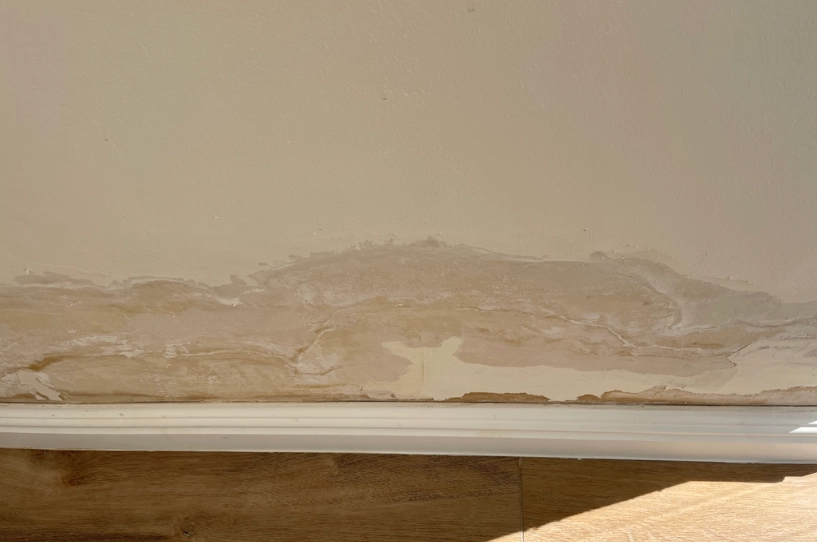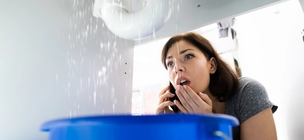Water damage on walls can occur unexpectedly and often goes unnoticed until the effects become visible. It’s an issue that requires immediate attention to prevent long-term problems. Understanding the causes and the professional repair process is key to addressing the damage efficiently and restoring your home to its original condition.
What causes water damage on walls?
Water damage on walls can happen for various reasons, often linked to hidden issues within the home’s structure. Here’s a breakdown of the typical sources:
- Leaky plumbing: Damaged or aging pipes are a major source of water leaks inside walls. The water remains hidden until it creates visible damage, such as stains, peeling paint, or warped drywall, like the damage visible on the image.
- Roof leaks: Water from a damaged roof can trickle down into walls. This often results in ceiling stains or water damage on upper walls that spreads downward if left unchecked.
- Foundation problems: Poor drainage around the home can allow water to seep through the foundation, especially after heavy rains. This causes damage near the base of walls, which looks similar to the watermarks on the provided photo.
- Condensation: Poorly insulated walls in humid climates can lead to condensation inside the walls, resulting in damp patches and eventual water damage.
- Faulty gutters: Clogged or damaged gutters and downspouts can direct water towards the house, leading to water penetration at the foundation and subsequent damage to interior walls.
This image shows one of our requestor’s wall displaying clear signs of water damage:

More information about the price of plumbing services can be found on our cost page.
What If mold is found?
Mold is a frequent companion of water damage and can lead to serious health concerns. When water has been sitting for some time, as indicated by the extent of staining in the provided image, mold inspection becomes essential. If it is detected, a full remediation process is necessary, which includes:
- Removing affected drywall and insulation if there is any
- Treating the area with antimicrobial solutions
- Using HEPA air scrubbers to remove airborne mold spores
How do professionals handle water damage?
When professionals repair water-damaged walls, their goal is to fix them ensuring the issue doesn’t reoccur. Here’s what to expect:
- Inspection and diagnosis: Professionals start by locating the source of the moisture using moisture meters and infrared cameras. Once identified, the cause - whether a leak, condensation, or infiltration - can be fixed.
- Moisture removal: Industrial dehumidifiers and fans are used to dry the area. The drying process ensures no moisture remains trapped inside, which could lead to further issues like mold.
- Repairs and restoration: After drying, professionals replace damaged drywall, insulation, or other materials. Visible watermarks, like those in the requestor’s image, are addressed by scraping off damaged areas and applying new plaster and paint.
Read another one of our articles, which talks about the differences between waterproofing and damp proofing.
How long do repairs take?
The time needed to repair water damage depends on its severity. Simple repairs, such as replacing small sections of drywall and repainting, may take only a few days. However, if the damage is extensive, with soaked insulation or mold growth, the process could extend to a week or more.
In conclusion, water damage in walls requires swift professional intervention to prevent further deterioration and costly repairs.
Request a quote for plumbing services from our professionals for a quick and effective solution!



